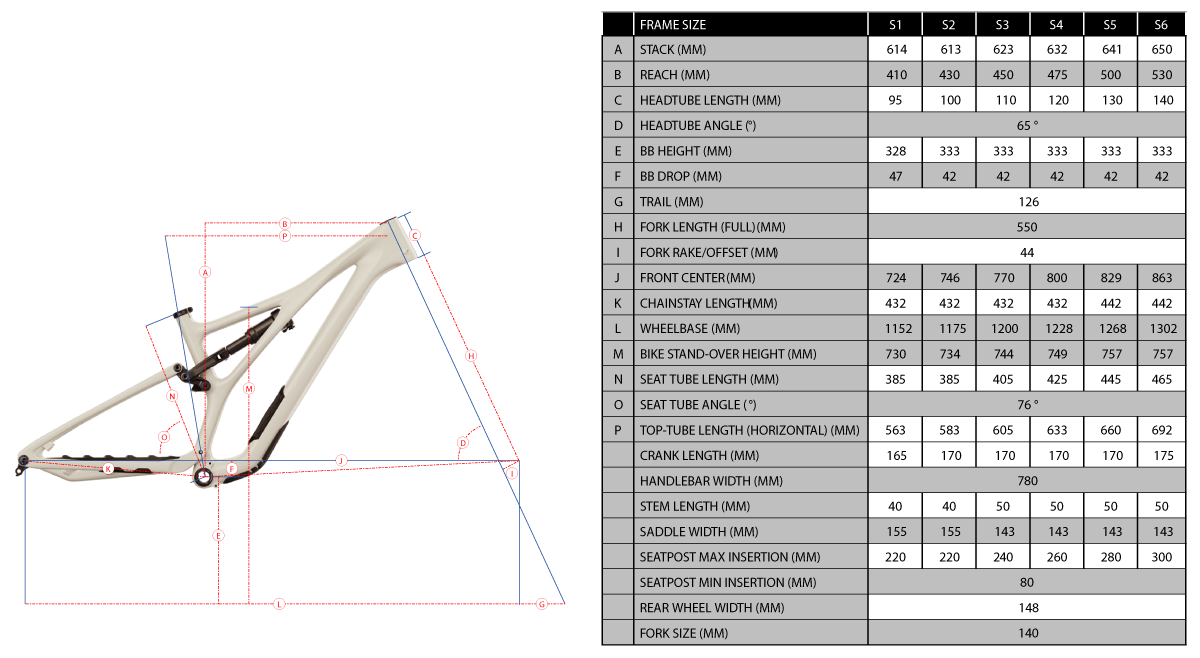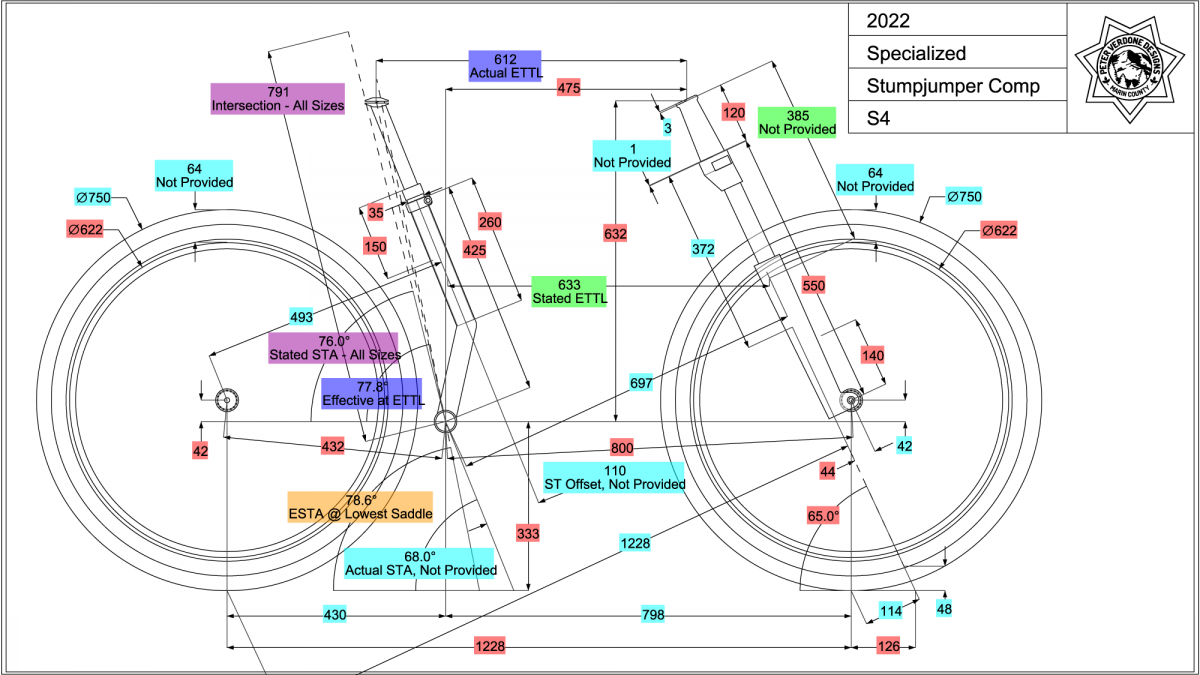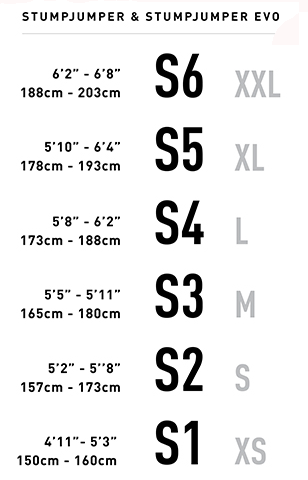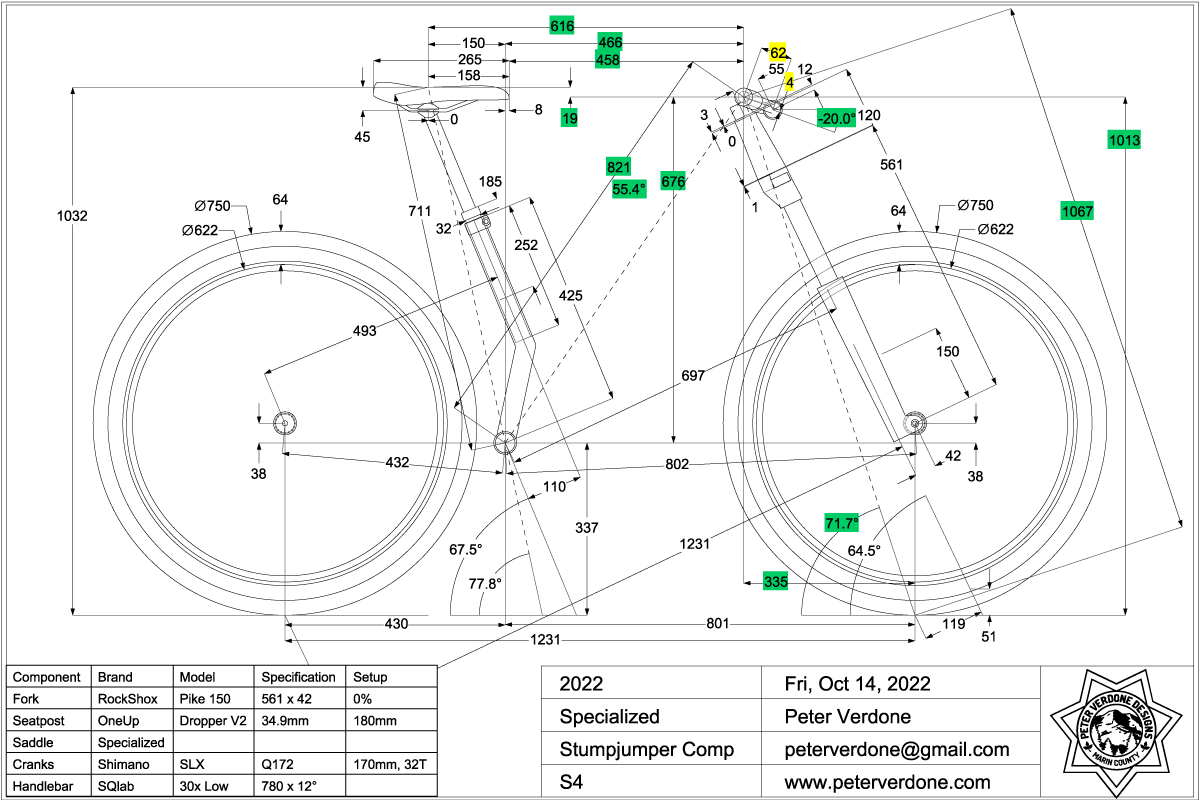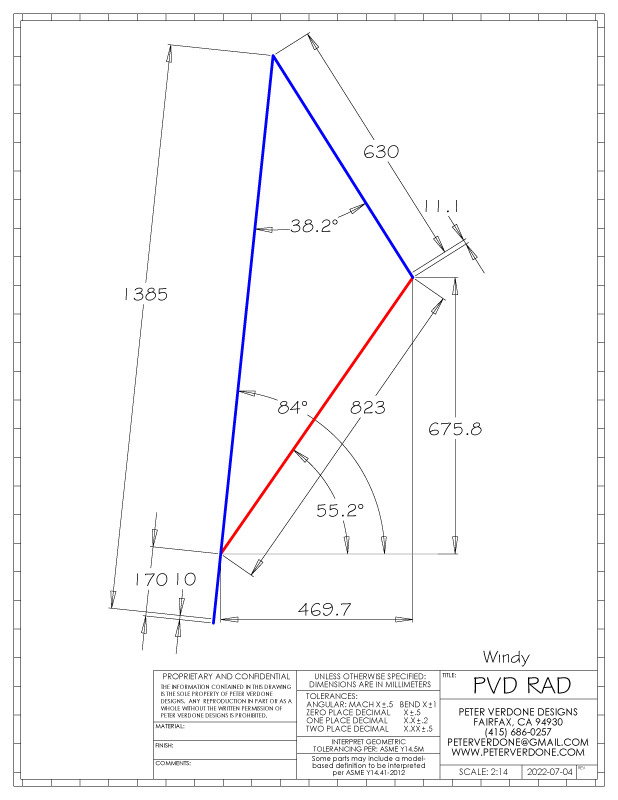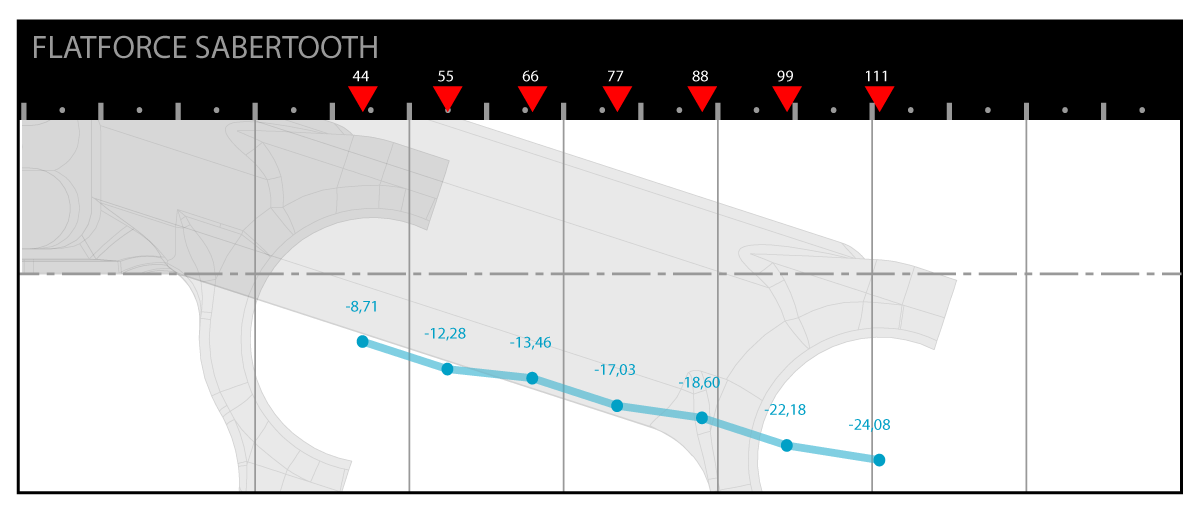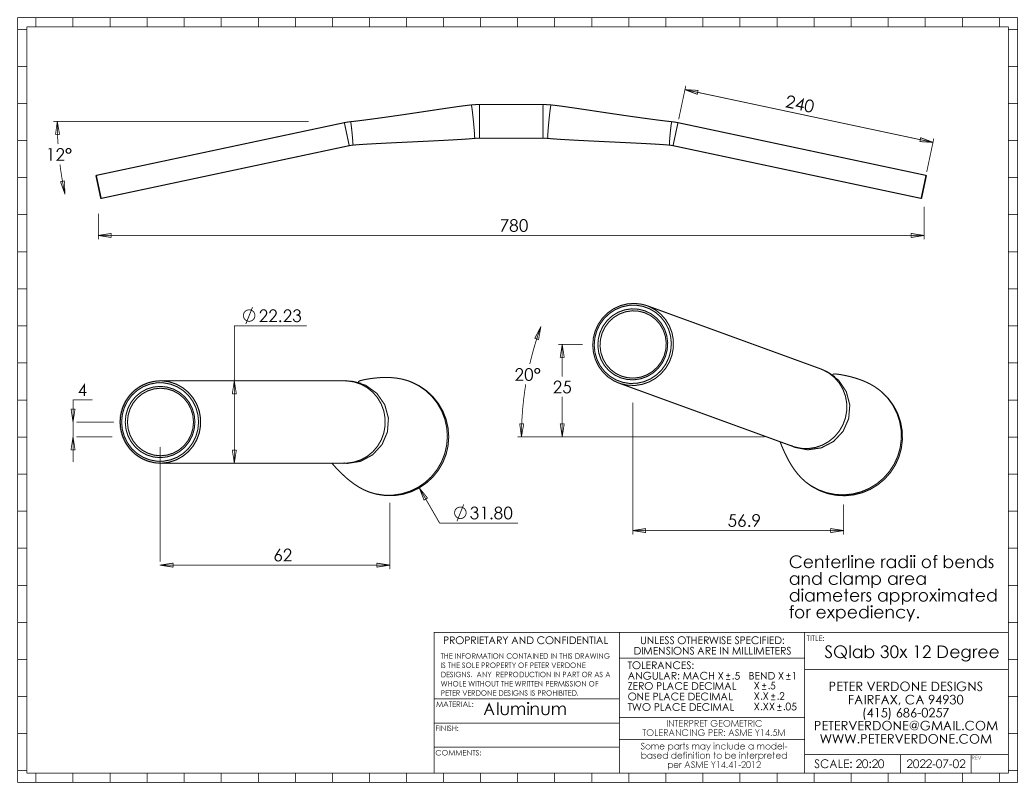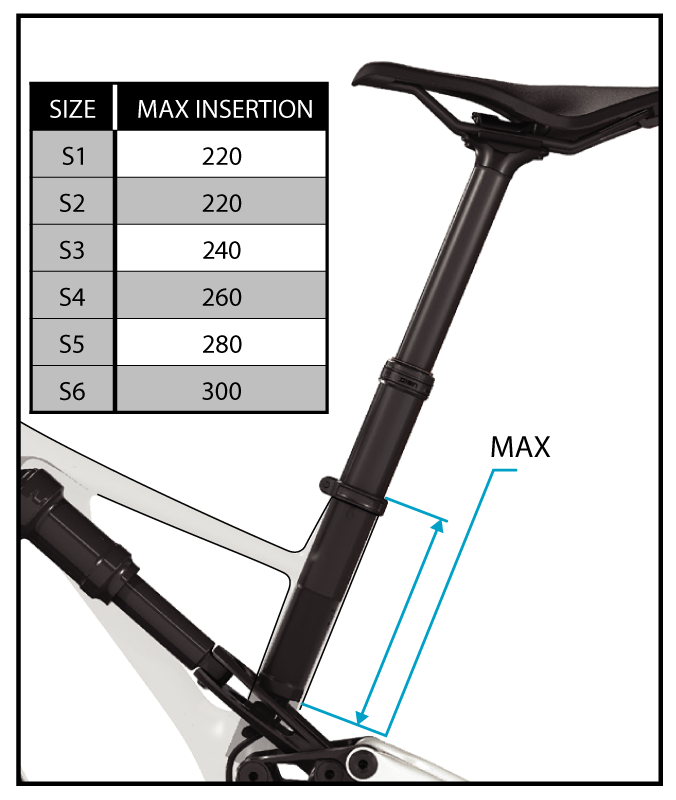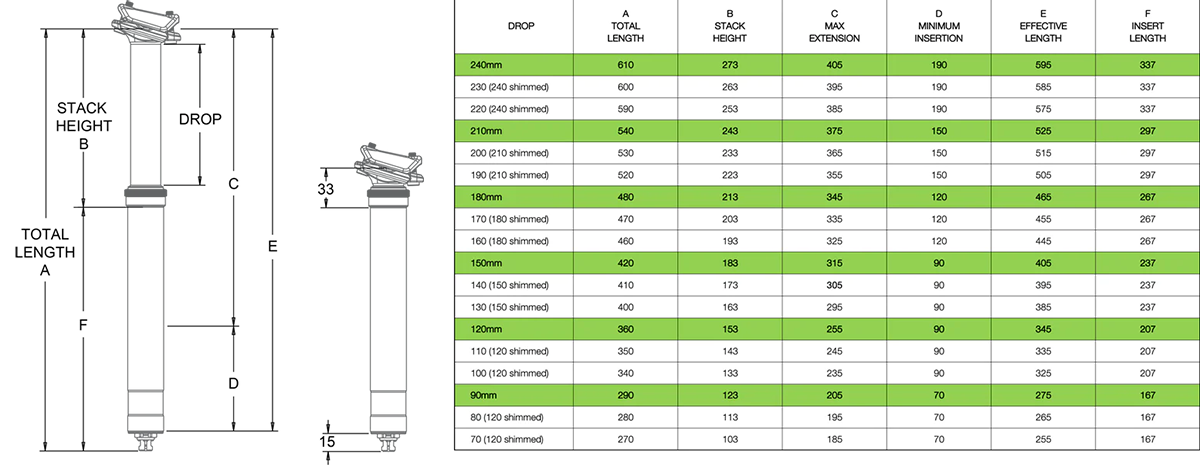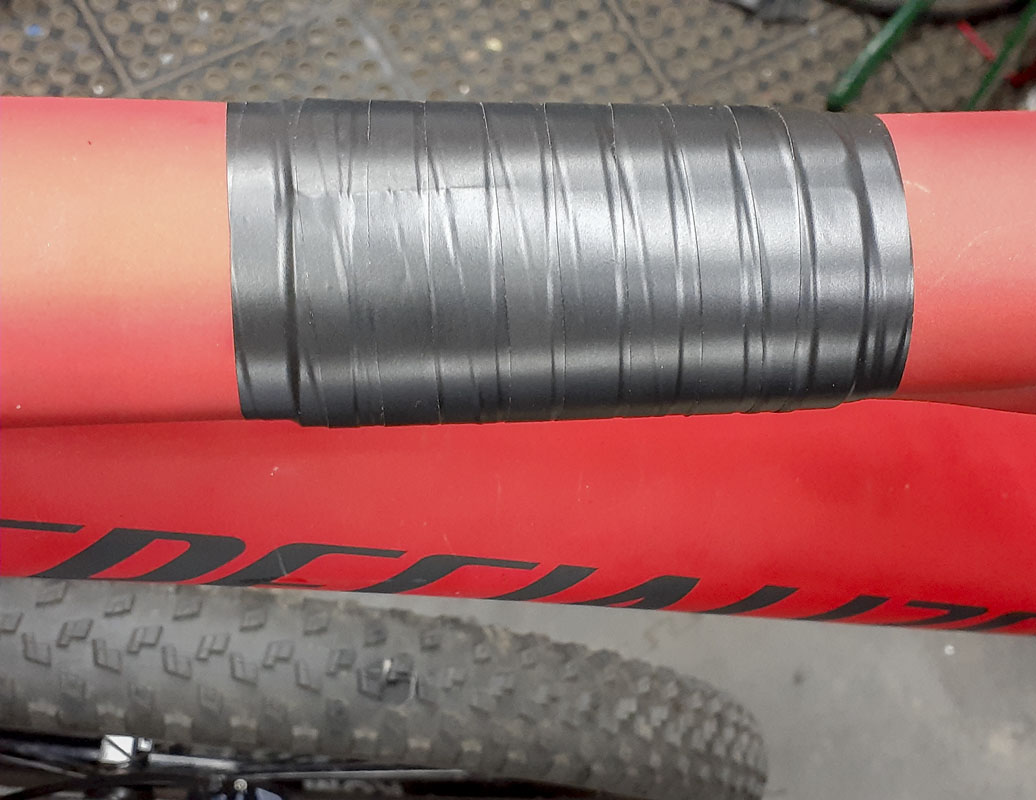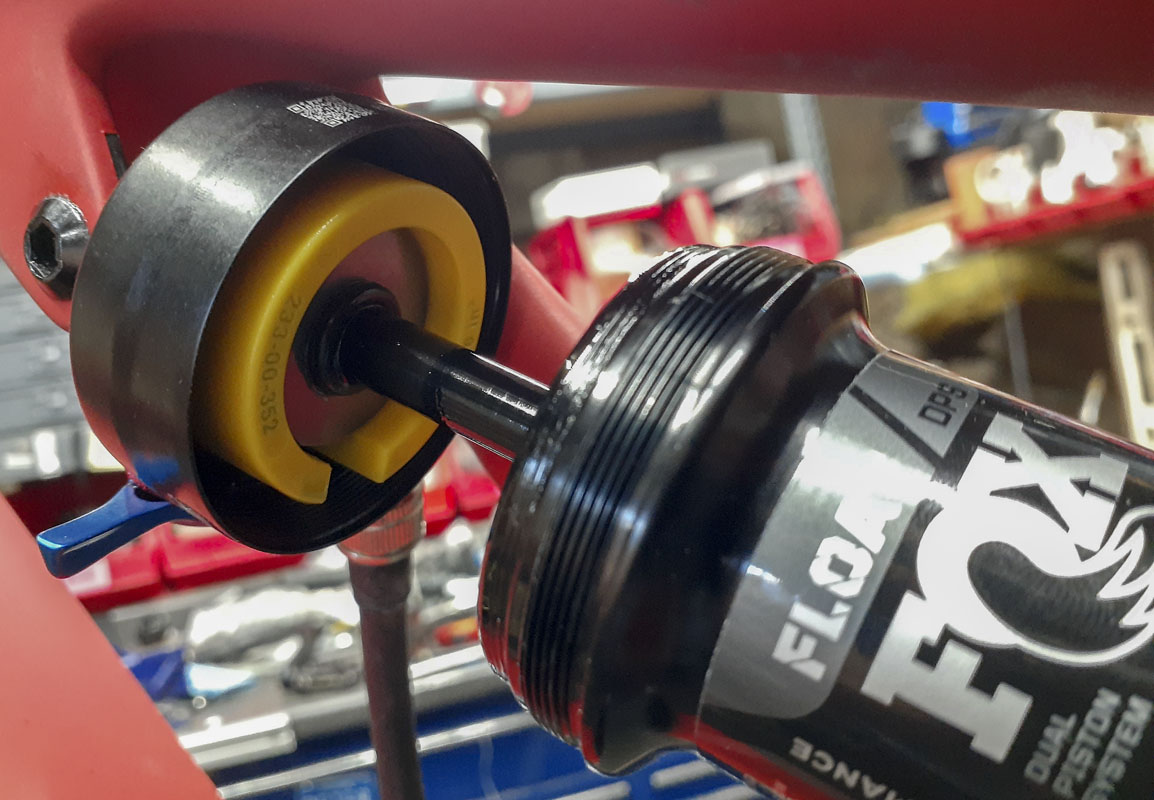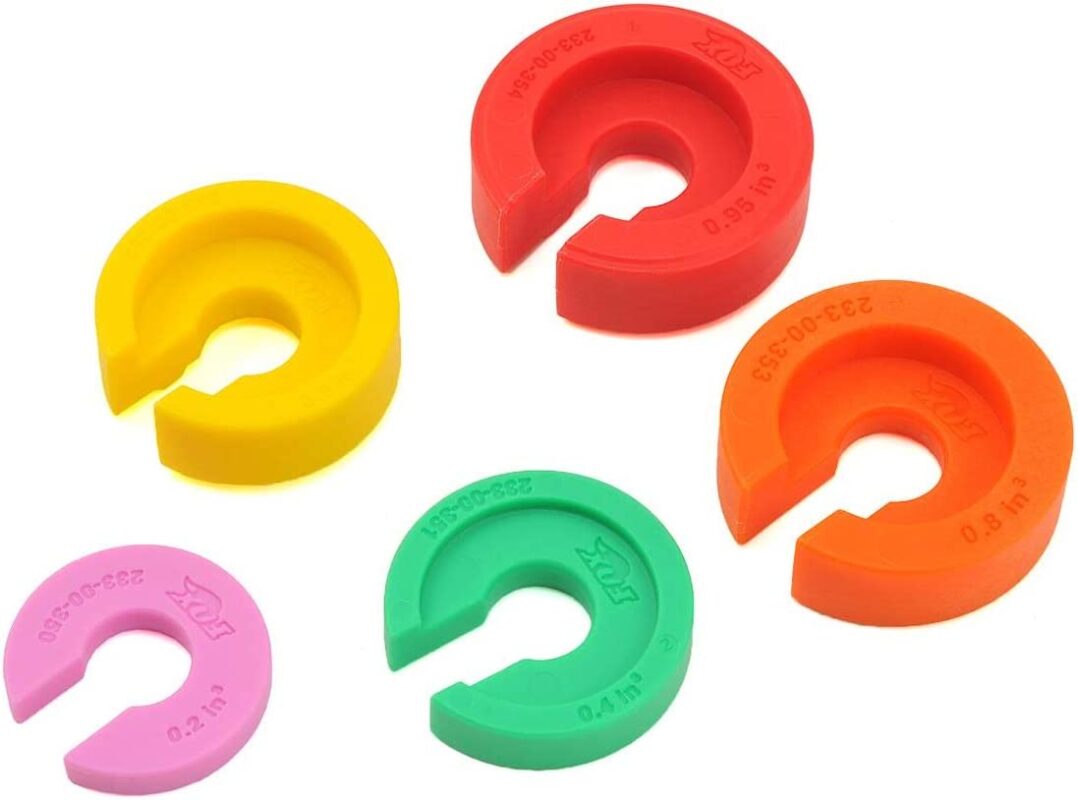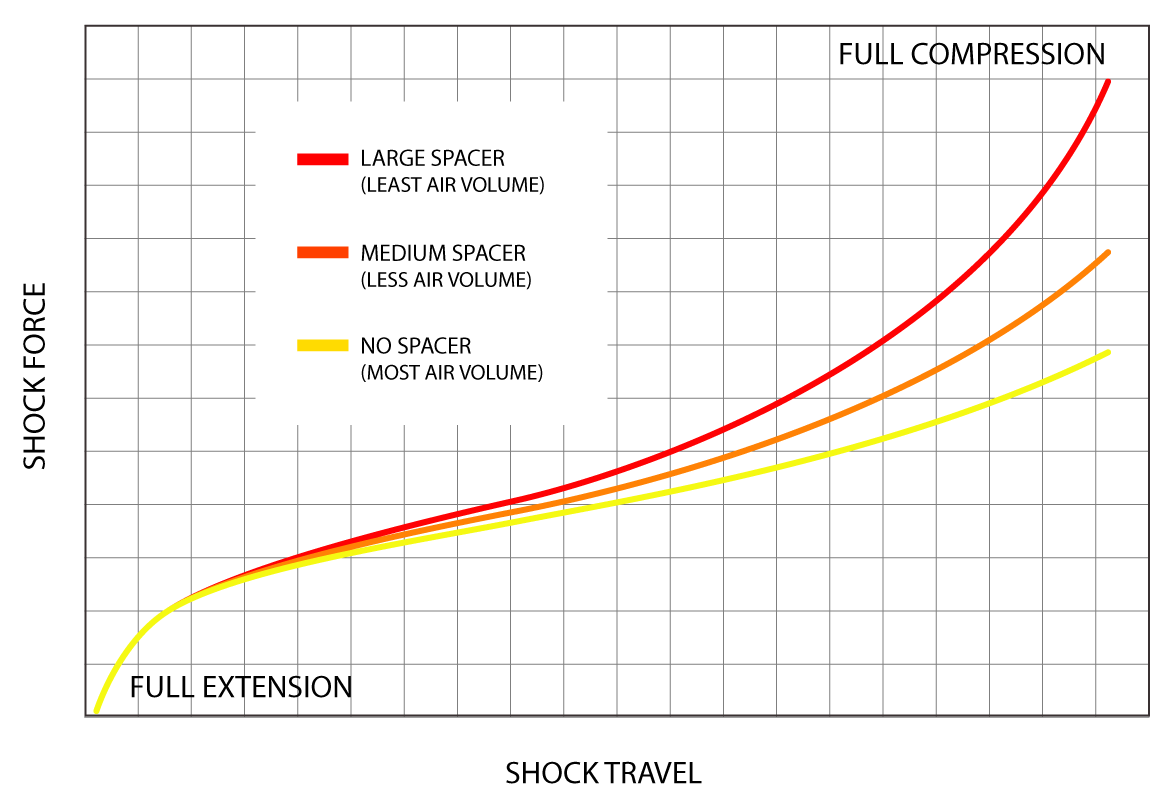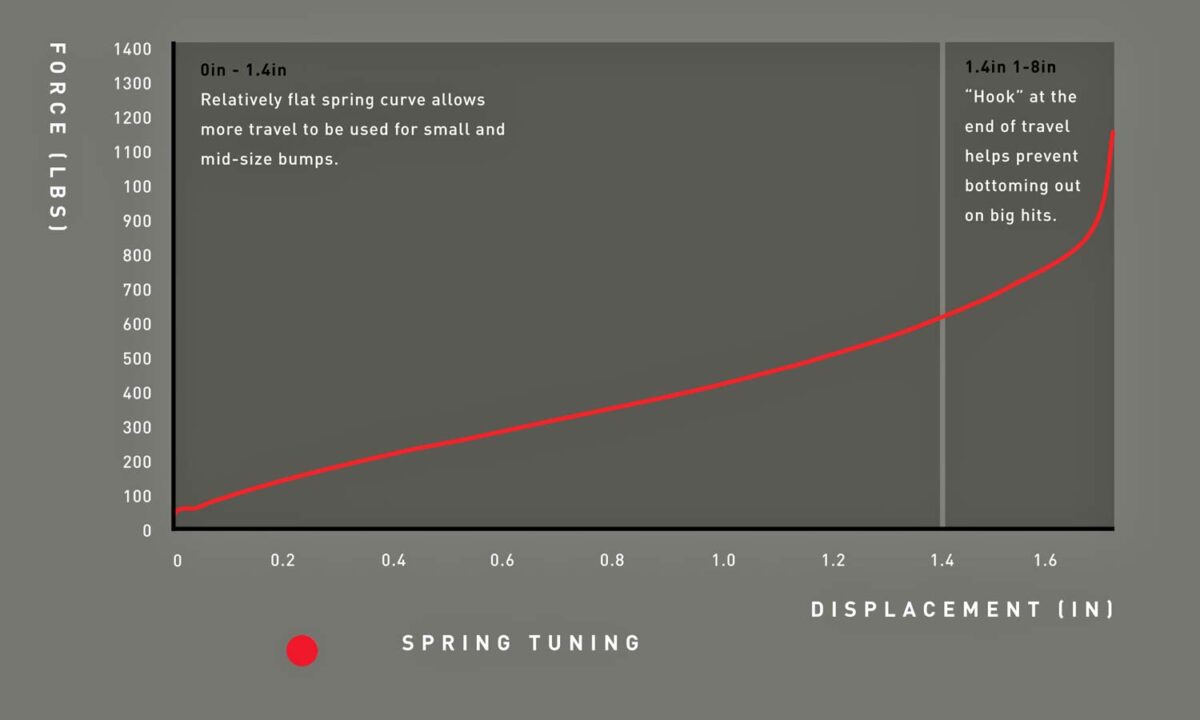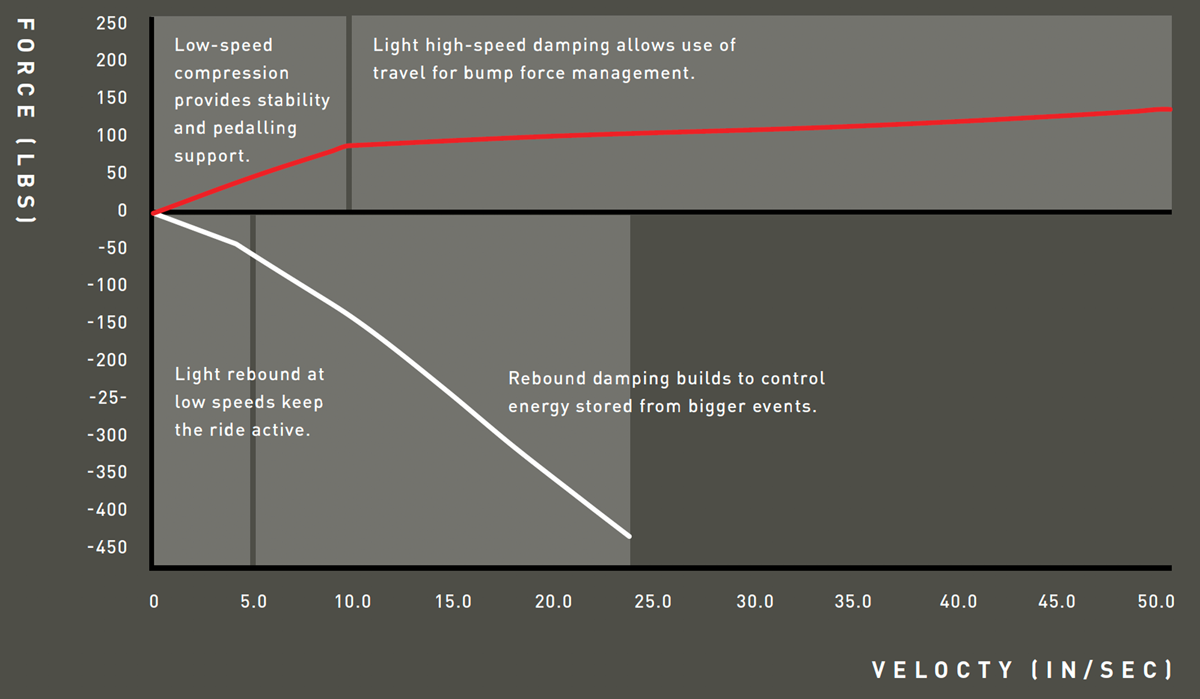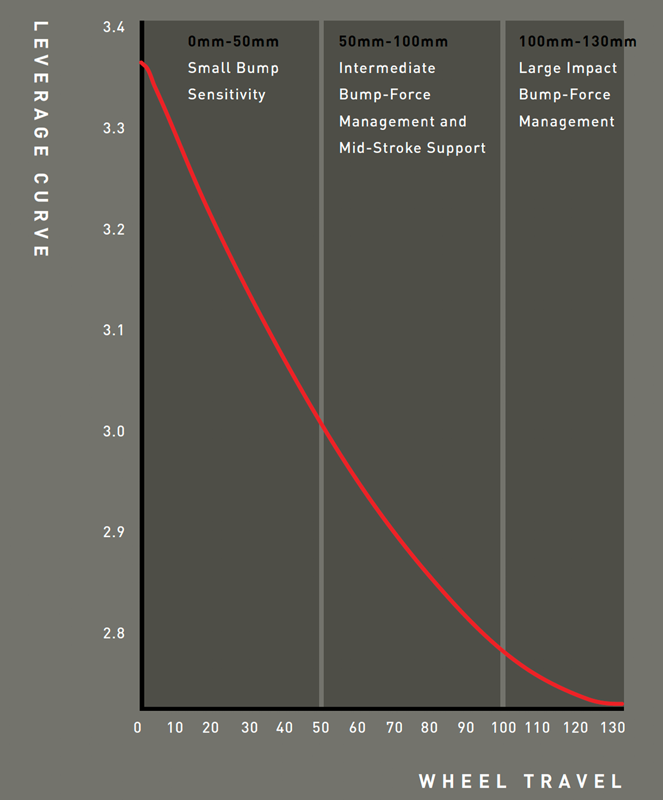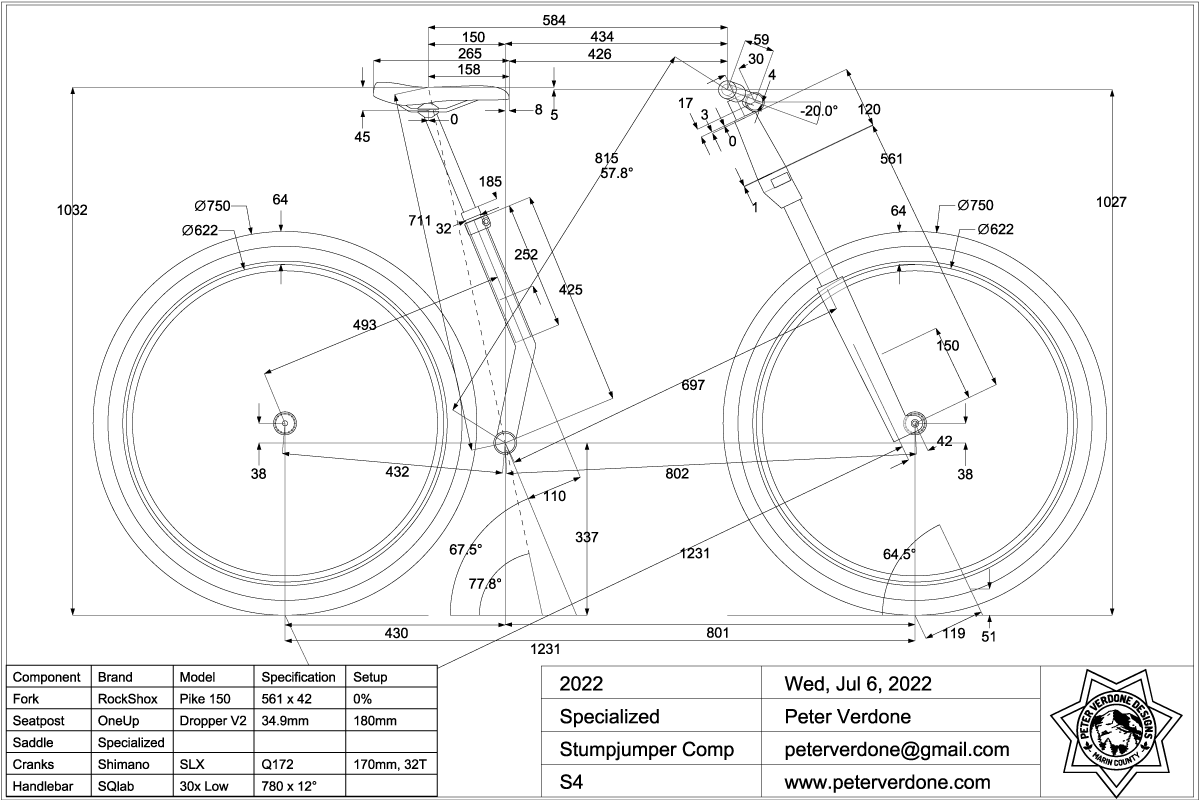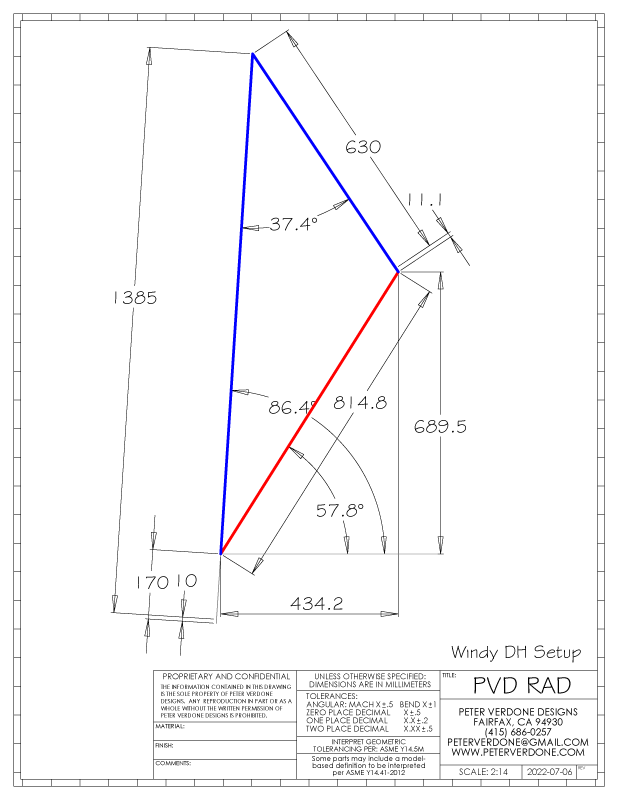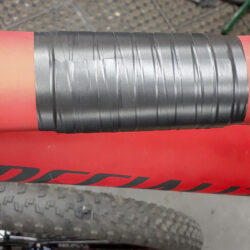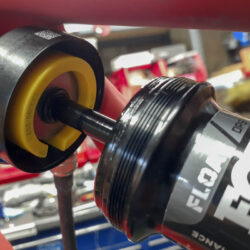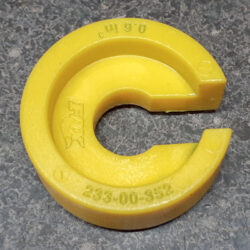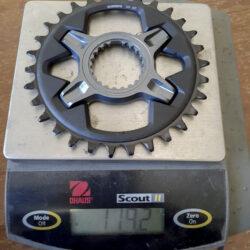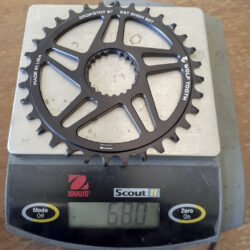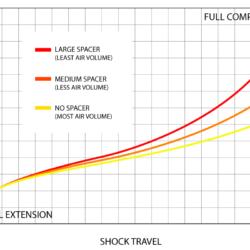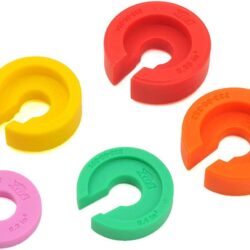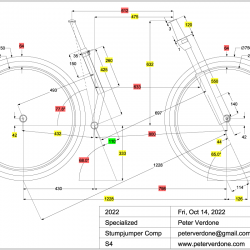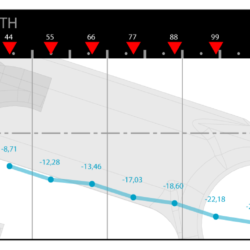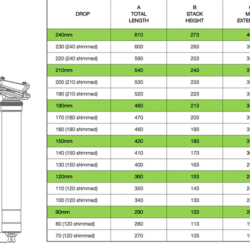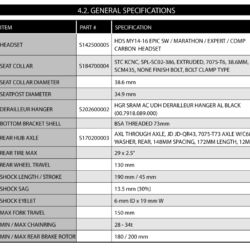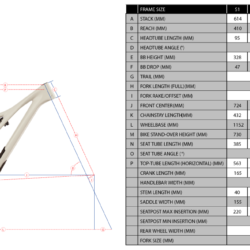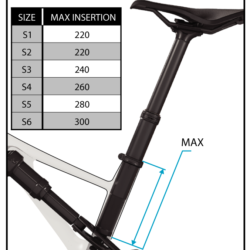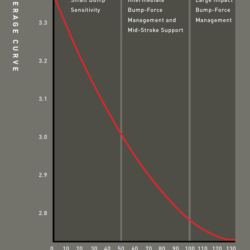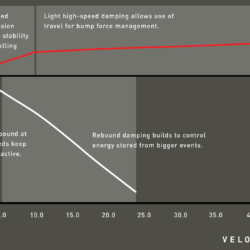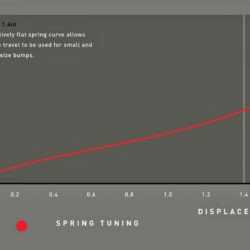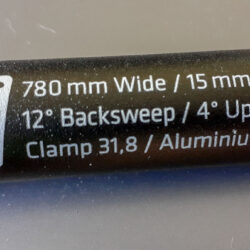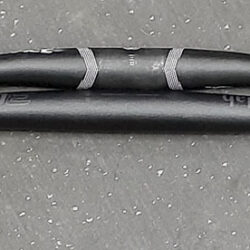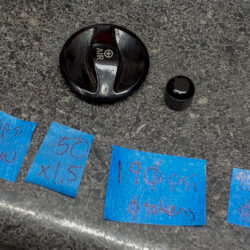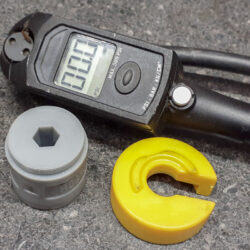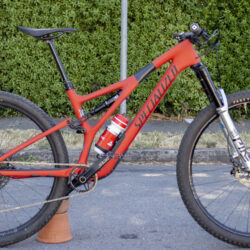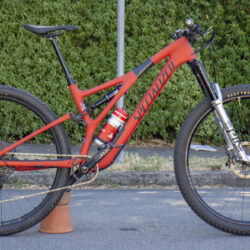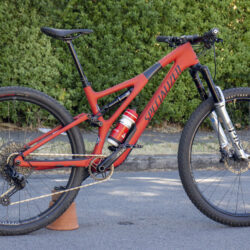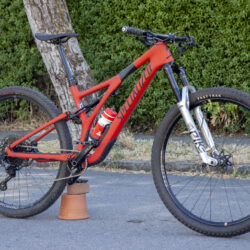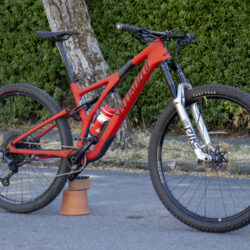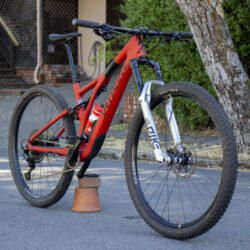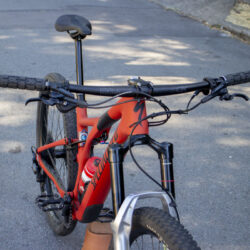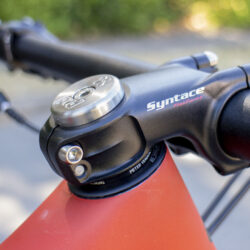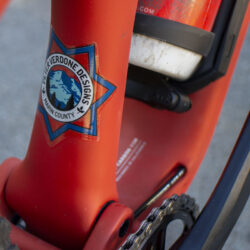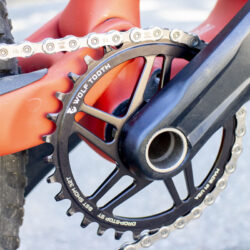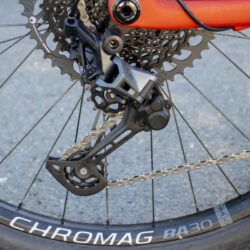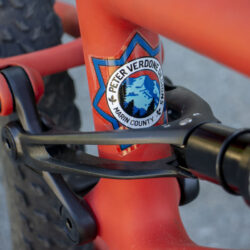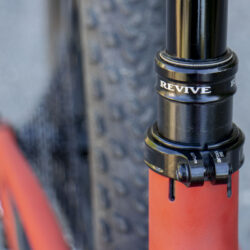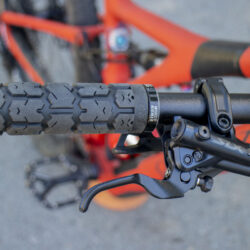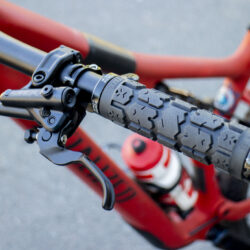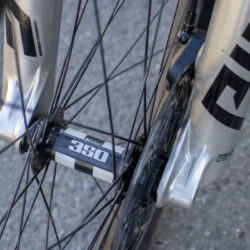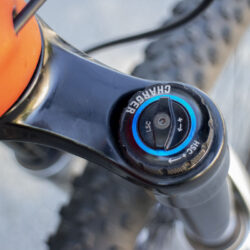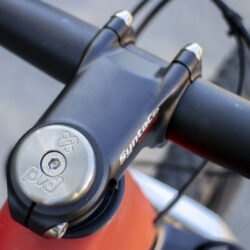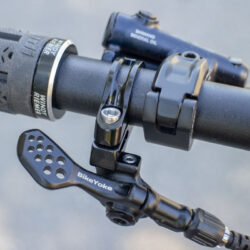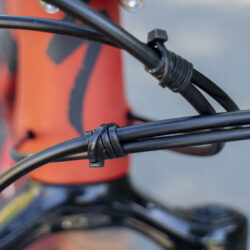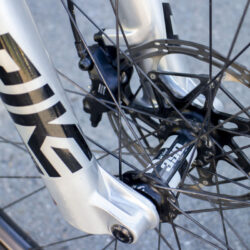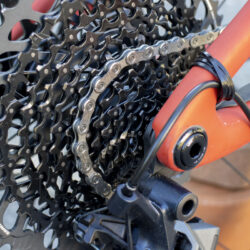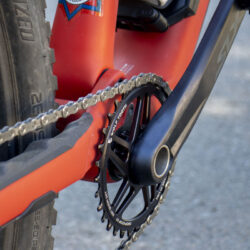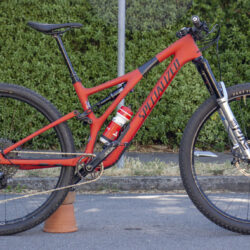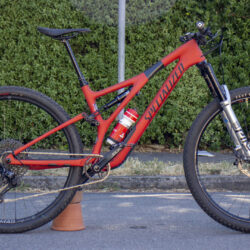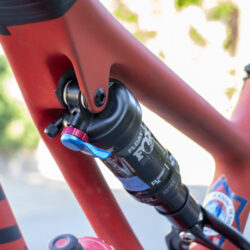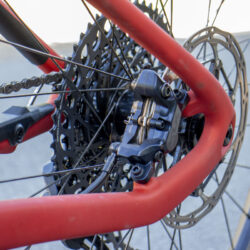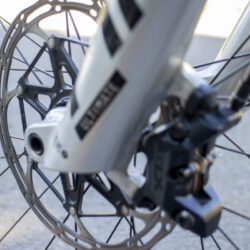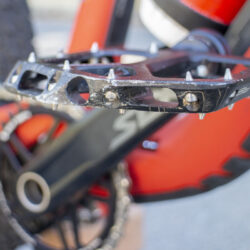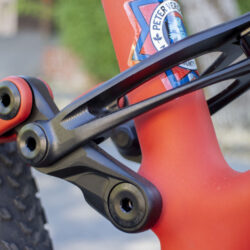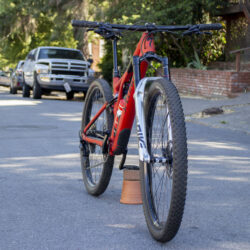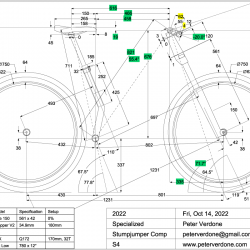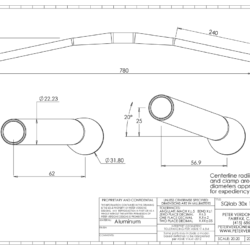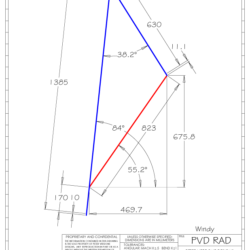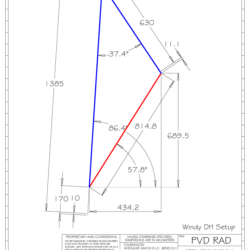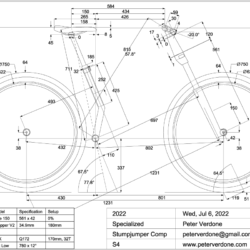It’s new bike day for Windy!
I’m hoping that some of the younger folks read this post and be able to develop a new understanding of how to look at putting commercially available bicycles together. Most of my work is done at the extreme high end of construction and a development level that few can relate to. Here, I’m working with a bike and parts that anyone will have access to. The difference in what I do and what is typically done at your local shop or by your bro lay in the decisions that I’m making, why I’m making them, and how I’m understanding the problem.
To start, buying this bike came about by frustration. I had been promising for the last couple years to make my full suspension bikes and my wife, Windy, was to get the first. I owed her. Something needed to replace the suspension bike that I sold out from underneath her years ago. It took too long. Windy has finally given up on me. She was sick of waiting and riding hardtails everywhere like in Sedona, Moab, and chairlifts. Places where a hardtail, even by my own admission, are not optimal.
I know.. I’ll get to building one. To be fair, I have been busy.
This bike is like The Bishop. Red and dangerous. A killer in heels.
In a perfect world, I would have been able to get a frameset and assemble it with every part to my spec. As we all know, the bike world is a strange place (stranger in the time of COVID scarcity) and buying a complete bike is currently far easier than just a frame and every part. We decided to bite the bullet and sell or repurpose the leftover parts.
The choice of brand was obvious. I’ve been saying to people that the current performance geometries coming from Specialized really were some of the best available for the consumer buying bikes from showrooms. They’ve been pushing what can be done without losing the ability to use commodity handlebars and stems. It was time to put my money where my mouth is.
We went down to our local Specialized dealer Splitrock Tap and Wheel and our friend Jason (the owner) helped get us something from the floor that wouldn’t break our bank. We didn’t need anything crazy fancy but I wanted to get Windy on something really exciting. One bike stood out above all of the others…
The Specialized Stumpjumper Comp S4.
There are 3 reasons why we chose this bike and they all have to do with the frame:
- The geometry. Obviously. This bike stands out as being significantly more modern and well thought out than most other options, especially among the lower travel sect. The head tubes are too long. The seat tubes don’t provide as much insertion as they should and should be shorter. Otherwise, the layout is highly usable for modern setups. Windy riding on 800mm of front center is going to be sick!
- The rear flex stay. I’m a serious suspension nerd even though I’m known as the ‘hardtail guy’, my past work as evidence of that. I know what I’m doing and how to tune well. I will say that the flex stay isn’t the greatest thing from a pure kinematic perspective. At it’s heart, this is a single pivot bike. It is practical and much better in real use than other designs. Kinematics aren’t everything. The lack of a set of FSR pivots by the rear axle does a huge amount to increase the structure of the rear end and reduce weight. Service and maintenance are minimized. mud contamination issues are minimized. The working envelope is smaller. There are too many good things about this system to ignore even if the kinematics aren’t cutting edge.
- 130mm of rear travel on a 29er bike is a really really good amount for real riding that involves pedaling…like we have in Marin. 130mm is enough to ride rough trail and get most of the gains that suspension provide without the disconnect that longer travel bikes produce. I think that 120-140 is really the range for all but the most aggressive types to use.
Of course, I have some issues with the bike. Nothing that isn’t typical for every commodity bike.
The supplied geometry data is more detailed and thought out than has historically been done. Still, it’s incomplete, has errors, and needs to be gone over by an actual expert. This stuff is important to those of us that take bikes seriously and having junior interns putting this information together isn’t acceptable when it’s impossibly easy to do. Specialized – take geometry seriously and post the information!
Looking at the geometry matrix, we can see that the geometry ‘designer’ is using reach and head tube length as the driving parameters between frame sizes. It’s a shame that Specialized is still hanging on to this antiquated method. In a better world, they would be using front center and stack as the driving parameters and reach as a driven parameter. This would make far more sense at every level of design.
There are real problems with the geometry data as supplied and this is common for many bicycle suppliers. No information is supplied that will tell a fitter anything about the seat tube. None! For example, the O – SEAT TUBE ANGLE is imaginary and has no meaning. The seat tube has an offset, but there is no information provided for that. We might use P – TOP-TUBE LENGTH (HORIZONTAL) (MM) to try to interpolate something about the seat tube, building from the head tube. We can’t do that here because that dimension is specified at an unknown point below the top of the head tube…and also it’s WRONG. I found that to get a 633mm measurement here, the point would need to be 375mm below the top of the head tube. That’s about where the fork seals are. When people ask why I’m so angry at the bike industry it’s that this can and ALWAYS happens…and all the ‘fitters’ and coaches and bike experts have never noticed. Charlatans. I know some tricks that allow me to fill in some blanks but the seat tube still required some guess work.
For your information, the actual seat tube angle on this frame is 68 degrees. The seat tube offset is (approximately) 110mm. The effective top tube length (top of head tube) is 612mm. Now a real measured drawing can be produced and fit to. The bike is described in the LOW position.
The rear center length of 432mm isn’t overly long like most bikes have gone with to their detriment. It’s actually quite good. Still, I wish that they had done more work to bring that down. 430mm or less would be pretty spellbinding on this platform. Specialized sells this frame with a longer rear center (442mm) in the S5 and S6. A smaller one for the S1 and S2 would be very cool and what I would love to swap into Windy’s setup.
Windy is 5’6″ tall. Why did we buy a S4 instead of an S3/2 as almost anyone else would have bought? Specialized clearly recommends an S3/2 for a person of her height. This is why: we’re buying a bike by the geometry numbers. This is how it’s supposed to be done.
Simply put, the S4 is the faster and easier to ride bike. With a front center of 800mm compared to the S3 at 770mm (or S2 at 746mm), there’s a huge difference here. This especially helps Windy as she isn’t doing things where a shorter front end would help. For example, I’m 5’10” and use a 850mm front center. Windy is 94% my height. Her ballpark front center should be 801mm by this metric. There’s more to it but you can see the motives. If we can get her fit to the S4, that is the bike we want.
Here’s the PVD/RAD calculation for the fit that we’ve arrived at. As I think more about it, there’s some ‘cab forward’ going on with this fit as Windy looks very natural and comfortable seated pedaling. Her arms project a comfortable 90 degrees from her torso when seated. She feels good on the bike. But the seat tube is much steeper than her other bike. 77.8 degrees here versus 74.9 on her hardtail. That 34mm more forward. This, even though the saddle/grip relationship are within a few millimeters of each other. The bike is set up for much better climbing but still a bit more upright than my setups. With a stem swap, it will be great for chairlift days. It’s just a whole different thing. Where is the balance for trail? I’m at my limit standing on the pedals as is. Can this kind of setup work well?
Still, is this a good setup? Windy is not the best reviewer of setups and what they do well or not. I’m going to have to see if this is valid or not.. sometime. This is pointing to something that can improve PVD/RAD. I just need to put the time in.
Nothing against the Fox Float 34 Rhythm 140 (550/44) but I had a fairly fresh RockShox Pike Ultimate RC2 150/42 B4 (561/42) that I could use for this bike to make it just a little more ruthless on the trail without much added weight. I’ll sell that fork or use it on another project. 140mm isn’t much for even a hardtail. I don’t know why they are using something so small. This fork is 11mm longer than the stock fork so the geometry in the print has been adjusted to reflect this. Note, I’m starting the tuning for Windy with a 1.5x token in the fork. Now we can fit.
To fit Windy to the bike, a Syntace 55mm Flatforce stem and SQlab 3OX 12° low handlebar (62/4/12°) were used. I’ve been using 14° degree grip angles on my more recent bikes and I’ve really enjoyed it and found little drawbacks. Granted, I’m not racing DH or enduro on them. We’ll see how Windy likes this and maybe try the new Salsa Bend Deluxe 17° when it becomes available in a few months. See THIS POST for what happened with this.
One thing that is important to consider about higher handlebar sweep angles is that they can open up some cockpit space that will allow smaller riders to get into longer frames. In the non-custom world, that’s a big deal. Look into this if you aren’t a racer and if your fit is a bit snug.
This bike has the same problem almost every flat bar bike sold today has, the totally useless 35mm handlebar and stem. Seriously, I have a barrel full of these takeoffs. They have no use. There is no way to properly fit a rider to bike with this GARBAGE. 31.8mm is what we use because we can do real setup, not PinkBike forum crap. The setup you see here is impossible with 35mm parts. In fact, very little is possible with 35mm. Let’s stop selling this junk just for it to go to landfill.
The stock 170mm dropper post is a little short on stroke. A 210mm or so would be preferred here but won’t fit. We live in Marin. More is needed and I was able to order a 34.9mm/180mm OneUp dropper (on the way) that should fit fine on the bike with a 711mm saddle height. While doing setup, I found that an older BikeYoke Revive 31.6mm/185mm dropper actually fit with a few millimeters to spare (shown). It just took the use of a 31.6 to 34.9 seat tube adapter. Great news that two performance options fit.
The Shimano dropper lever was just donkey so it was swapped out for a puny BikeYoke lever. Cleaner and nicer.
I design my frames to have a great deal of top tube clearance by keeping it as low as I reasonably can. The head tube and top tube on this bike are quite high. That means that the handlebars are going to strike and damage the tube in a crash. To prevent that, we’ve used the PVD ‘bean can’ method. I’ve updated that here with some thicker aluminum plate and a complex bend. Hopefully it keeps the bike safe but this is something that Specialized should address in the design phase.
There’s also the importance of Q-factor. The Shimano FC-M7100-1 cranks here are Q172 and they’re significanly wider than they need to be. I’m sure that a Q164 crank could be used on this bike and that would be so much nicer to pedal. More product managers need to pay attention to this and move it higher on the list. It’s important.
The rear brake post mount is just the wrong size at 180mm minimum. Yes, a lot of riders will use a 180mm rear rotor on this bike. For Windy, as a lighter and less aggressive rider and on terrain that is extremely slippery in the dry of summer and the wet roots of winter, a 160mm would have been preferred and much better.
The bike comes with a 30t chainring which is pathetic. We tend to ride 34t chainrings on our hardtails. I’m sure that a little can be knocked off for the squish but 4t is gross. I found a 34t DM chainring from Wolf Tooth for the bike. Notice also that this was a 50 gram lighter part than the stock SLX ring.
This frame is produced with a threaded bottom bracket shell. This is super lame. PF41/89.5 is the right way to go…even if it upsets all the keyboard warriors and ‘technicians’. Let’s pretend we know what we are doing, eh?! Fuck! The stupidity has gotten totally out of hand.
Both Windy and I ride Onyx silent hubs. Once one gets on them, it’s very hard to use anything else. I grabbed a wheel from the Spitfire to add an older G1 Onyx to this bike. Since that has an xD/r driver, I used a SRAM 10-52 cassette. All spiffy. I need another Onyx wheel… maybe something with carbon for this bike…
The stock tires that came with this bike are probably fine for big mountain use but we have particular conditions in Marin. The ground is slippery in the summer regardless of tread and rolling resistance needs to be kept to a real minimum. I swapped out the shoes for some tires that would give some real pep into this bike. It should feel pretty dam fast. I didn’t install any cores into the tires as Windy simply doesn’t have a problem with flats or burping.
The Shimano drivetrain is just not great to be around. The brakes (BR-m7100) feel great but the drivetrain is just a nightmare. I’m very accustomed to the SRAM parts which are much better for mountain bike use (see x-horizon) and they are much nicer for setting up and living with. I can use all kinds of chainrings and spiders, dropper levers, and the shifter gives much more room for the hand. If this bike had come with SRAM GX/12 it would have been utterly stellar.
The rear shock on this bike is a FOX FLOAT DPS Performance, Rx Trail Tune, rebound and 3-position compression adjust, 190x45mm. It’s nothing fancy and is probably fine for Windy. There is a tuning guide HERE. To adjust the air volume in the shock, I’ll need FLOAT DPS (9mm shaft) Air Spring Volume Tuning Kit: PN 803-01-250. The shock on the bike already has a #233-00-352 (Yellow , 0.60 in³) token in place, the middle of the range. I’m starting testing at 180psi. Hopefully that can go down when the larger tokens arrive.
- #233-00-354 (Red , 0.95 in³) 44.7mm OD
- #233-00-353 (Orange , 0.80 in³)43.7mm OD
- #233-00-352 (Yellow , 0.60 in³) 38.7mm OD
- #233-00-351 (Green , 0.40 in³) 38.1mm OD
- #233-00-350 (Pink , 0.20 in³) 32.7mm OD
2022-07-01 – Shakedown #1, Tamo to Burnt Tree. The bike was working very well. Comfort was reported to be great on both uphill and downhill. Fit is on! The saddle was said to be ‘hard’ but not immediately painful. Giving that some time. I added some air to the rear shock and took some from the front. I was looking at ground tracking but the last 1/3 of travel wasn’t obtained. Windy isn’t very aggressive so finding a good balance is a challenge. I’m removing all of the volume tokes to see if the next ride can get a little more from each end. The tuning has started!
2022-07-02 – Shakedown #2, China Camp, The kues. Without a doubt, removing the volume spacers helped. Changed pressure a few times, ending up with 37 psi front and 165 psi rear. The problem is that Windy rides far too gently and isn’t putting enough force into the bike. That needs to change, thus, suspension settings are odd. Still, if she can speed up and push more, she’ll be using all of the travel. We removed the 2mm spacer from under the stem. Body position seems very good up or down the hill. Trying to see if we can get to something more aggressive. Would be nice to find a lower stem. Climbing traction is excellent. Gearing is just low enough for the real climbs. Standover can be an issue.
2022-07-03 – Shakedown #3, Rancho 1.5 to Splitrock. I think that the bike is pretty well set up. We just need Windy to start smashing a bit harder and get the suspension moving. The fit remains comfortable for her and there are no complaints. She looks very relaxed on the bike. I did notice that she’s using more travel in the front than the previous test. That could be the terrain change or that she’s smashing more as I keep telling her to. The ‘cab forward’ setup could have some to do with this. Bike is shifting fine and the mechanics are flawless. Now it’s time to test fit the 30mm Megaforce 2 DH stem and final cut housing to length!
In a few weeks, we’re going to be in Winter Park, CO and getting our first lifts at Trestle Bike Park. This is a perfect place to see if a bike setup for Marin trail can be used chairlifting with just a change of tires and a 30mm Syntace MegaForce2 stem swapped out.
Let’s look at the change that this stem will produce…
And look at the PVD/RAD calculation…
This rocks her 2.4 degrees more upright and her arms another degree closer. This should be excellent for her and her abilities and attitude on the trail.
I’m excited for Windy to get to ride a bike like this. I honestly think that we have a really great bike in front of us.


